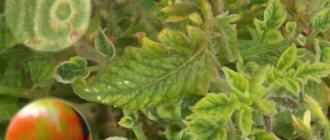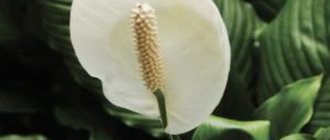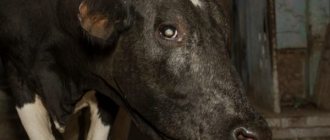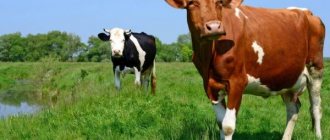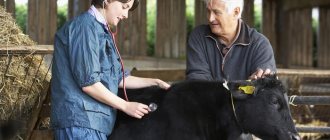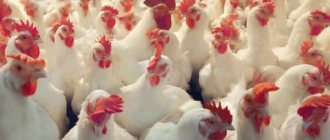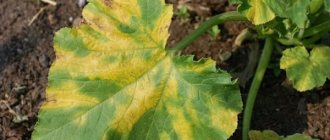Causes
Veterinarians note that udder swelling in most cases is observed in recently calved cows, but it also happens that the pathology can also occur in nulliparous individuals. The main causes of swelling are the following:
- toxicosis in a cow throughout pregnancy;
- various heart diseases in animals;
- kidney problems;
- improper diet for first-calf heifers during pregnancy;
- uneven blood circulation, too little blood flow in the udder.
Any of the above reasons can cause swelling; sometimes this phenomenon develops in a cow immediately before the birth of a calf. But still, farmers most often encounter this problem after the animal has given birth.
Experts note that this disease can often be observed in those individuals of cattle whose daily diet contained large quantities of proteins, but there was not enough hay and straw, or none at all.
Signs
Any farmer should know about the main signs of udder edema, since this knowledge will help to quickly see the development of the pathological process and seek help from a veterinarian. The main symptoms of the disease are the following:
- the skin thickens on the surface of the organ, resembling dough in appearance and feel;
- swelling, if you press on the skin of the udder, does not disappear; after pressing, the organ takes much longer to take its previous shape;
- swelling can be observed not only on the entire organ, but also on its front or back part;
- the temperature of the skin directly on the udder will be colder than on other parts of the animal’s body;
- Swelling in the nipple area is especially noticeable; their appearance will differ from those that have not yet undergone this phenomenon;
- after the birth of a calf, swelling on the udder may be on one part or another;
- an increase in body temperature after calving is not often observed in cows;
- the appearance of milk during edema changes extremely rarely, its quantity may only decrease;
- the cow does not experience discomfort if the nipples are touched;
- swelling that appears before birth may disappear if everything is in order in the animal’s body.
Symptoms
The disease is manifested by swelling of the back of the udder, the right, left half, or swelling of the entire udder. The pathology is characterized by disappearance and appearance also in other areas of the gland.
The length of the nipples is noticeably shortened. The skin becomes rough, cold to the touch, shiny, and when pressed, a depression appears that slowly disappears. The swelling sometimes extends beyond the udder, and the abdominal area may also become swollen.
Mild swelling often occurs before calving and goes away when lactation begins. If the mammary gland has become swollen as a result of injury, and if the swelling does not go away for a long time, mastitis may develop.
A complication after swelling can cause udder induration. The udder hardens, the connective tissue texture replaces the parenchyma. It is very difficult to milk a cow; the amount of milk produced drops sharply. A sick cow is culled.
If the swelling has a traumatic etiology, one cannot help but notice the presence of hematomas and abrasions. The affected udder hurts and when you touch it, you feel that the temperature is increased.
Possible complications and consequences
Veterinarians do not recommend leaving this problem in a cow unattended. Swelling of the udder for several days before and after childbirth is not considered a pathology. But this phenomenon must be monitored, as it can reduce the resistance of the udder tissue and the entire body to various harmful bacteria.
In addition, swelling can lead to the formation of a disease such as mastitis in the animal. Also, the disease has the ability to become chronic, and during this phenomenon the connective tissue grows and becomes denser. With these pathologies, the size of the udder becomes larger, and the volume of milk that the cow can produce becomes smaller.
It is worth noting that mastitis can occur in stages. At first it may be serous and catarrhal. With this type of disease, there is a deterioration in expressing milk due to the formation of plugs in the milk ducts. At the same time, the cow does not feel worse; body temperature can be observed only in areas of the udder that have undergone swelling.
A farmer can determine this type of illness by boiling milk. With serous mastitis, it breaks up into flakes, and with catarrhal mastitis, it becomes less fatty.
In addition to the above types of mastitis, there is the most dangerous one, which is called fibrous. Often this type of disease becomes purulent. With fibrous mastitis, the animal’s body temperature rises, lumps appear in the udder, and it becomes painful. The purulent type of the disease is characterized by the appearance of pus and the development of inflammation in the tissues of the udder.
Veterinarians advise starting treatment for mastitis in its early stages so that the animal does not stop lactation.
Swelling or Mastitis: Symptoms and Differences
It is important to distinguish normal bloating from mastitis. Symptoms of swelling include the following:
- The udder increases in volume.
- There is a noticeable thickening of the skin.
- As the tumor grows, it can take over part of the abdomen.
- The process occurs shortly before or immediately after childbirth.
The symptoms of mastitis are different:
- Not the entire udder is compacted, but only a quarter of it. Rarely, two quarters are affected.
- When milk is milked, it comes out in the form of curd clots, sometimes with blood. This is best seen if, when compacted areas are detected, you try to milk the cow into a vessel whose bottom is covered with black cloth. Mastitis can be either infectious or the result of negligent animal care.
How to treat udder swelling?
The veterinarian selects medication for the cow. It is unacceptable to choose medications on your own, as you can worsen the situation.
Most often, to cope with the disease, doctors prescribe intravenous calcium gluconate to the animal. This drug helps normalize blood circulation. Your doctor may recommend using calcium chloride instead of this medication, as it has the same properties. The exact dosage and duration of therapy is determined individually in each case after examining the cow.
Also, in order to restore the function of the cardiovascular system, veterinarians prescribe subcutaneous injection of a drug such as Caffeine Benzoate to the animal. In addition, the doctor may prescribe treating the disease with ointments that eliminate swelling, for example, Rigefen, which contains phenylbutazone and aluminum.
In addition to this ointment, the veterinarian may prescribe Bismuth-zinc, which is applied several times a day. Vishnevsky ointment and ichthyol ointment are also effective. These drugs are excellent at combating inflammatory processes, but give milk an unpleasant aftertaste.
Sometimes doctors prescribe diuretics and laxatives to animals. It is worth mentioning that such drugs are prescribed at the final stage of therapy, but they cannot be used at the beginning of the development of the disease.
In parallel with drug treatment, the veterinarian may advise the owner of the cattle to massage the udder. This procedure is prescribed in order to restore the movement of blood and lymph in the organ, as well as to reduce the level of pressure in its tissues. When performing a massage, it is prohibited to use creams and ointments.
You can also get information on how to avoid udder swelling in a cow and cure it from the following video:
Treatment methods
Minor postpartum swelling disappears quickly, taking about a week. Treatment of a more serious udder tumor comes down to one of three areas: diet therapy, physiotherapy and drug treatment.
In order for the swelling to subside, they begin by eliminating succulent feed. The cow's diet should contain less salt and concentrates, as well as high-protein supplements. It is necessary to feed the cow with high-quality cereal hay.
Advice: A sick cow should be kept tied, eat and drink from individual feeders and tanks, and take light walks in the field or near the paddock. Swelling of the udder prevents the animal from grazing in the general herd.
Milk should not stagnate in the glands. Physiotherapy includes milking or expressing milk; during treatment they are performed at least 5 or 8 times. If there is swelling before calving, the udder is milked once a day.
Advice: To restore blood flow and normal lymph circulation, a massage is given, they begin to massage the nipples and gradually reach the base of the mammary gland. The drooping udder is fixed with a support bandage.
If an adjusted diet and physical therapy do not help relieve udder swelling, external ointment is used. At the same time, absorbable solutions are administered intravenously: Calcium chloride or gluconate. These drugs have an antiallergic effect, they help increase blood clotting and prevent the evaporation of useful blood components through capillaries.
A sick cow is given medications that strengthen the heart muscle. The use of Caffeine normalizes its functioning and also removes excess fluid from the mammary glands. It is effective to lubricate the udder with Rigefen, which has analgesic and antiphlogistic effects. You need to apply the medicine to the inflamed areas for a day or 4 days until the inflammation stops.
You can use Bismuthzinc ointment, Vishnevsky or Ichthyol. Folk remedies can only be used after consultation with a veterinarian.
Folk remedies
Instead of drug therapy, the doctor may recommend treating the cow’s illness using folk remedies. One of the most popular methods of treatment is hay dust poultices. If the cow is relatively calm, this method will work great for her. You can also try to get rid of swelling with warm wraps. In addition, veterinarians advise tying up the udder if it sags too much.
Some experienced farmers treat the disease by changing the animal's usual diet. It is especially important to monitor the cow's nutrition during pregnancy and after calving. Salt and high-calorie food should be excluded from her menu for this period.
The animal must eat high quality hay. Veterinarians also advise owners to be more attentive to the milking process. A cow should be milked at least 7-8 times a day. In addition, it is worth making sure that the cow drinks enough water. Special dill water helps speed up recovery.
When the udder edema, it is very important that the animal is not subjected to mechanical stress on this organ. But, nevertheless, he needs to walk in the fresh air 2-3 hours a day.
Prevention
Preventive anti-edematous measures are considered to be compliance with the recommended parameters for keeping and feeding cows. An animal free from a leash will not suffer from adynamia. If the recommended zoohygienic parameters are observed, the cow is provided with adequate exercise, dry, clean bedding, and a moderate content of harmful gases.
The main preventive measure against diseases of the udder and genitals is the correct organization of feeding during dry periods, as well as during the transition period, limited to three weeks before and after childbirth. Timely launch, two months before the expected calving date, ensures the renewal of udder tissue and its preparation for a new lactation.
In addition to reducing the number of milkings, the cow is provided with a special diet. In the wild, ruminants calved in early spring, when there was no grass on the pastures. Therefore, they ate dried vegetation. This approach is also justified for farm animals. Therefore, the cow is deprived of succulent feed and concentrates and transferred to hay. It should be cereal to prevent excess protein and calcium. Three weeks before the expected birth, the microflora of the forestomach begins to prepare for the upcoming lactation - concentrates, protein supplements, silage or haylage are introduced in small quantities.
It is necessary to pay increased attention to the quality of feed. Check cows' food products for the content of microtoxins, prevent rapid fermentation in the rumen by pre-treating the grain - by flattening or extruding it.
The cow's feed intake is constrained by rumen pressure on the calf. And after giving birth, the animal’s appetite will be poor for a long time. This time due to the pressure of the scar on the uterus that had not recovered from childbirth. Therefore, dietary changes must be made gradually. Literally following feeding standards from reference books can play a cruel joke on livestock breeders. A pregnant cow needs one diet, a lactating cow needs another. But a cow is a ruminant animal, its microflora needs gradual changes.
Are there preventive measures?
To prevent a pregnant cow from developing udder swelling, it is necessary to organize daily walks for her and try not to feed her succulent feed. If swelling does appear, then they are completely excluded from her diet until she finally recovers. The animal requires special attention regarding feeding approximately two weeks before giving birth and for at least ten days after it.
To prevent mastitis from developing due to swelling, the cow must be kept clean. There should be no temperature difference in the room where she lives; the bedding must be changed daily. Before placing a cow in it for the winter, it must be thoroughly disinfected to destroy all bacteria. The process of milking an animal should also be delicate.
Swelling of the udder in a cow does not always indicate pathology, but in any case it deserves the attention of its owner and consultation with a specialist. If the disease is not treated in time, it can lead to serious complications in the animal’s body.
0
0
Copy link

